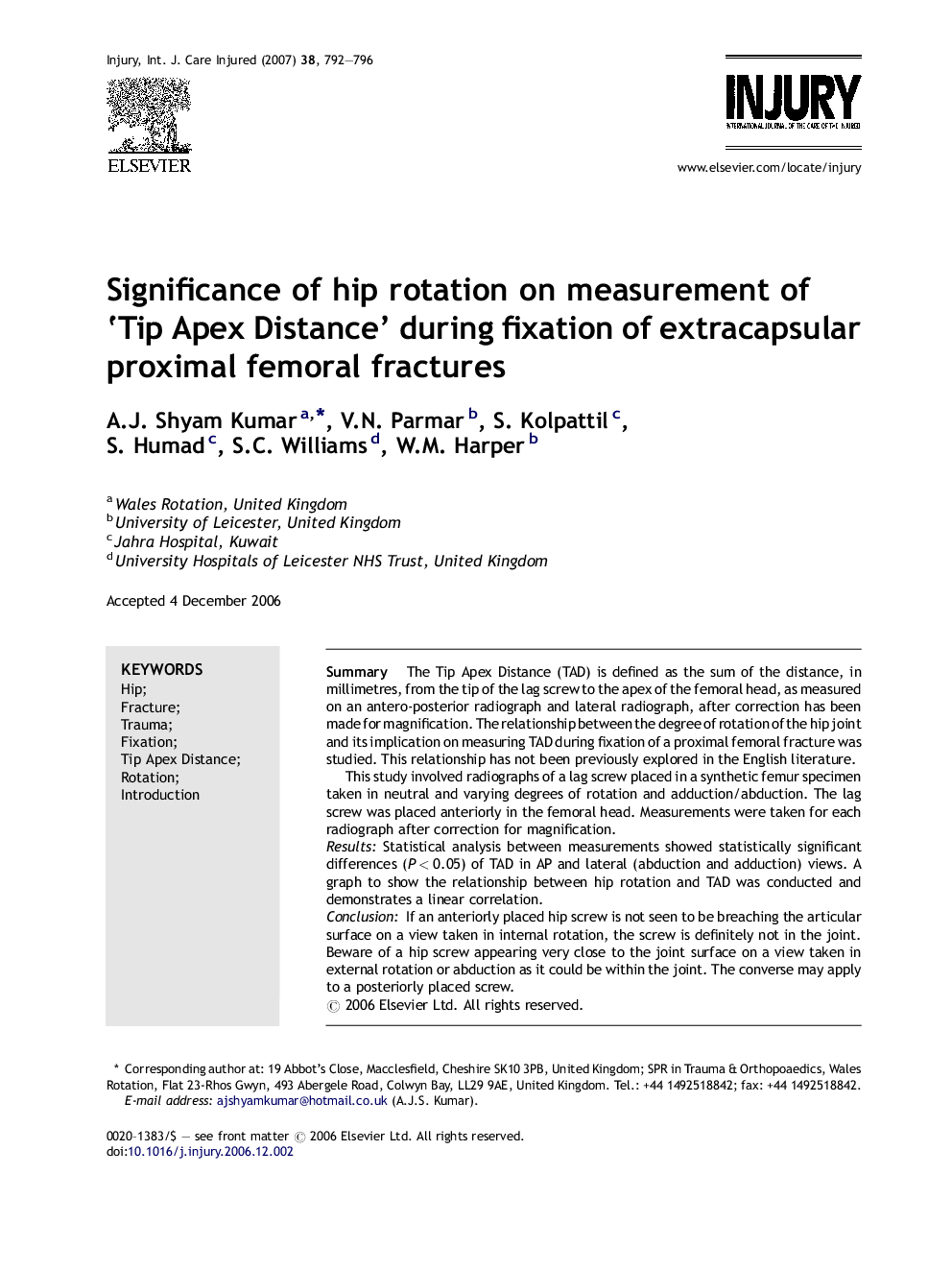| کد مقاله | کد نشریه | سال انتشار | مقاله انگلیسی | نسخه تمام متن |
|---|---|---|---|---|
| 3242297 | 1206105 | 2007 | 5 صفحه PDF | دانلود رایگان |

SummaryThe Tip Apex Distance (TAD) is defined as the sum of the distance, in millimetres, from the tip of the lag screw to the apex of the femoral head, as measured on an antero-posterior radiograph and lateral radiograph, after correction has been made for magnification. The relationship between the degree of rotation of the hip joint and its implication on measuring TAD during fixation of a proximal femoral fracture was studied. This relationship has not been previously explored in the English literature.This study involved radiographs of a lag screw placed in a synthetic femur specimen taken in neutral and varying degrees of rotation and adduction/abduction. The lag screw was placed anteriorly in the femoral head. Measurements were taken for each radiograph after correction for magnification.ResultsStatistical analysis between measurements showed statistically significant differences (P < 0.05) of TAD in AP and lateral (abduction and adduction) views. A graph to show the relationship between hip rotation and TAD was conducted and demonstrates a linear correlation.ConclusionIf an anteriorly placed hip screw is not seen to be breaching the articular surface on a view taken in internal rotation, the screw is definitely not in the joint. Beware of a hip screw appearing very close to the joint surface on a view taken in external rotation or abduction as it could be within the joint. The converse may apply to a posteriorly placed screw.
Journal: Injury - Volume 38, Issue 7, July 2007, Pages 792–796